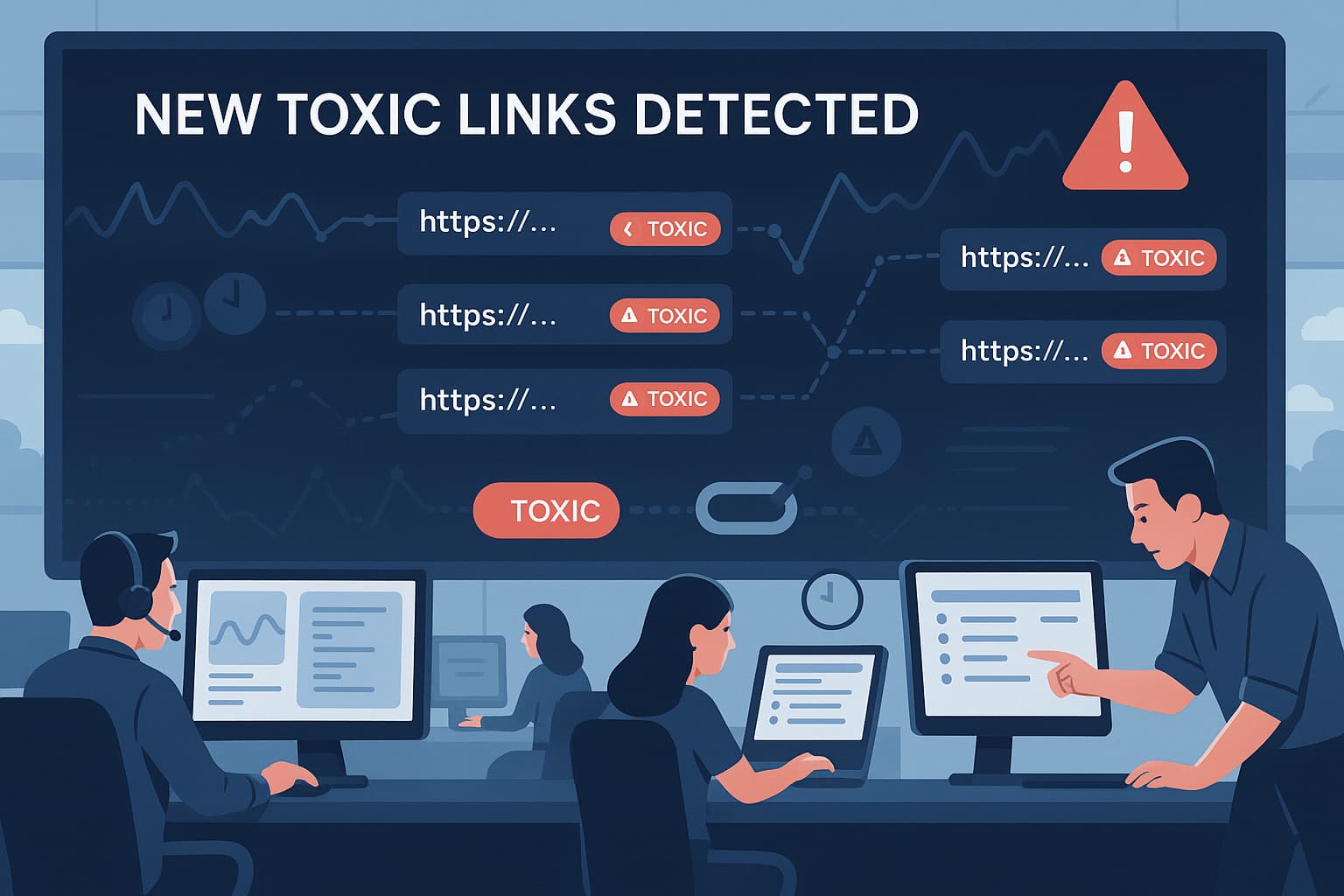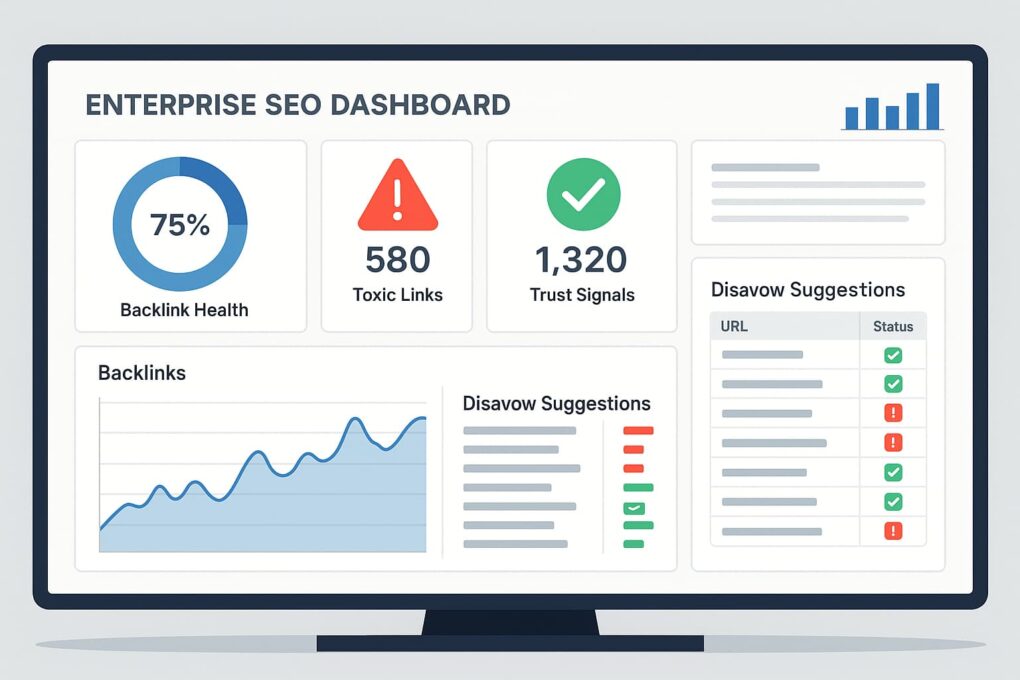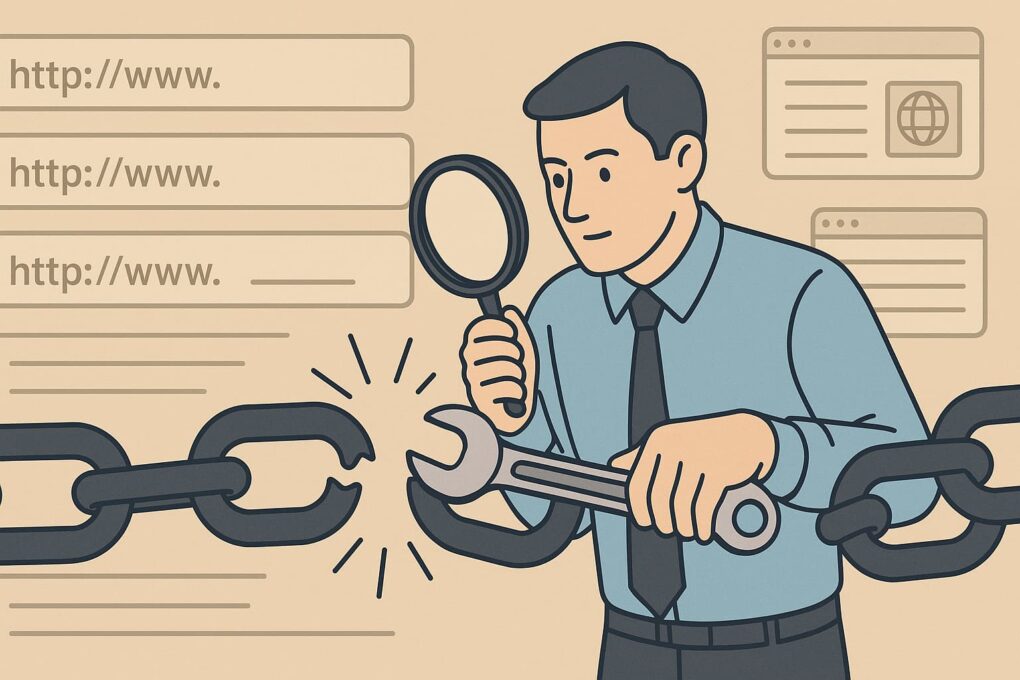
Who Handles Link Audits for Large Enterprise Websites?
For large enterprise websites, maintaining a strong backlink profile is critical for search engine rankings, traffic, and overall authority. However, managing thousands or even millions of links manually is nearly impossible. This is where professional link audit services come into play.
Why Large Enterprises Need Link Audits
Large corporate websites tend to gather numerous links over time—some valuable, others less so. These can range from irrelevant or spammy sites to even competitor attempts at manipulating search rankings. Since Google imposes penalties for harmful backlinks (potentially causing major ranking losses), conducting a comprehensive link audit becomes essential. A thorough link audit helps:
- Identify harmful links that could trigger penalties;
- Recover lost high-value links;
- Discover new link-building opportunities;
- Improve overall domain authority.
Without regular audits, businesses risk losing visibility in search results; thus, these checks are critical for long-term SEO success.
Who Conducts Link Audits for Enterprise Websites?
A good backlink profile is critical for major business websites’ search rankings and reputation. However, managing thousands (or millions) of incoming connections requires specific knowledge. Most enterprises handle link audits in one of three ways—each with advantages and drawbacks.
1. In-House SEO Teams
Some big companies handle link audits with their own SEO teams. They’ve got specialists using tools like Ahrefs, SEMrush, and Moz to check backlinks and decide which ones to keep or disavow. Keeping it in-house gives them more control, but it’s not perfect. These audits eat up a ton of time, especially for sites with millions of links.
There’s another catch – when you’re too close to a project, you might miss things an outside expert would spot. And let’s be honest, most internal teams have their hands full with other SEO work, so staying on top of Google’s constant changes and what competitors are doing isn’t always realistic.
2. Digital Marketing Agencies
Many companies outsource their link audits to full-service digital agencies that provide SEO along with other marketing services. These agencies typically have teams handling various tasks, including content creation, technical SEO, and backlink reviews.
However, not all agencies perform link audits with the same level of quality. Some deliver detailed, actionable reports, while others only do superficial checks. The approach varies—from agencies that rely solely on automated tools to those that conduct thorough manual reviews.
If you’re considering this option, research carefully. Ensure the agency has strong technical SEO expertise and doesn’t treat link audits as a secondary task.
3. Specialized Link Audit Services
For thorough backlink analysis, specialists are the most reliable choice. Unlike general agencies that handle multiple services, these experts focus exclusively on link audits. They excel at identifying harmful links, removing them, and uncovering opportunities for high-quality backlinks that others may overlook.
Take 3XE Digital, for instance. They don’t just rely on automated reports—they manually review backlinks to catch issues that tools might miss. Since link audits are their specialty, they excel at managing large, complex websites with massive backlink profiles. Compared to an in-house team or a general marketing agency, you’ll usually get more detailed reports and stronger ongoing support.
What Does a Professional Link Audit Include?

A high-quality link audit goes beyond just identifying bad links. It should cover:
1. Comprehensive Backlink Scanning
The process starts by pulling every link pointing to your site from all major SEO tools—Ahrefs, Majestic, Moz, and Google Search Console work together to ensure nothing gets missed.
It’s not just about current links, though. Looking at historical link data reveals important patterns, like unexpected surges in low-quality links or the disappearance of valuable ones. This historical view helps spot potential sabotage attempts from competitors or identifies natural shifts in a site’s backlink profile.
2. Quality Assessment
Backlinks aren’t created equal—some help your rankings while others can actually hurt you. Each one (or at least a representative sample) should be carefully checked for these key factors:
- Does it make sense? A link from a related site in your industry carries more weight than random connections (like a tech blog linked from a casino site).
- Can you trust the source? Look at metrics like Domain Authority and actual traffic to separate reputable sites from sketchy ones.
- Does the link text look natural? Stuffing keywords like “best budget laptops” repeatedly raises red flags with Google.
- Where is the link placed? Links woven naturally into good content work best, not those crammed in footers or spammy articles.
The difference between a good backlink and a bad one often comes down to these simple but important details.
3. Toxic Link Detection
Toxic backlinks from spammy or penalized sites can harm rankings. Audits identify these using SEO tools to detect PBNs, link farms, and suspicious patterns. Problematic links should be removed or disavowed to prevent Google penalties. Regular monitoring catches new toxic links over time.
4. Lost Link Recovery
Valuable backlinks sometimes disappear due to site changes or errors. Audits compare historical data to find lost high-authority links. Recovery involves contacting webmasters, fixing broken URLs, or updating content to regain links. Restoring existing quality links is often easier than building new ones.
5. Competitive Analysis
Studying competitors’ backlinks reveals gaps in your profile. Analysis shows which authoritative sites link to competitors but not you, and what content earns them links. These insights help prioritize your most effective link-building opportunities to improve rankings.
6. Disavow File Creation
When outreach fails to remove toxic backlinks, the next step is submitting a properly formatted disavow file to Google. A thorough link audit ensures:
- Only truly harmful links are disavowed (overuse can hurt rankings).
- The disavow file follows Google’s guidelines to avoid errors.
- The file is monitored and updated periodically.
7. Actionable Recommendations
A quality link audit report should give you straightforward, practical guidance—not just highlight problems. First, it needs to clearly identify toxic links that need removing or disavowing, with specific instructions for each one. Next, it should point out the best opportunities to build new backlinks, including which authoritative sites to target and how to approach them effectively.
The report should also suggest the types of content that naturally earn high-quality backlinks in your industry—whether that’s in-depth research, comprehensive guides, or interactive tools—and advise on whether to improve existing content or create new assets.
Finally, these recommendations should be prioritized based on their potential impact and how easy they are to implement. This way, you get a clear, step-by-step plan that turns insights into real ranking improvements while setting up a sustainable strategy for long-term success.
Choosing the Right Link Audit Provider

Selecting a link audit provider isn’t just about backlink analysis—it’s about finding an expert who can handle enterprise-level complexity. If your site has a vast backlink profile (multiple domains, subdomains, or merged properties), choose a provider with large-scale audit experience. They must process millions of links accurately and understand enterprise SEO challenges—otherwise, data may overwhelm insights.
Transparency is crucial. A good provider should detail their process, tools (Ahrefs, Majestic, etc.), and how they assess link quality and disavow recommendations. Since standards vary by industry (finance, healthcare, e-commerce), their method should reflect these nuances. Avoid providers relying too much on automation without human review. The best audits blend tech and expertise for actionable results.
Key Considerations for Implementation and Ongoing Support
A real link audit does much more than just run automated scans. Sure, software can flag potential issues, but when it comes to evaluating backlinks, nothing beats human expertise. The best providers strike the right balance—using technology to speed up the process while still having actual experts manually check key links. This hands-on review is essential because algorithms often miss the finer details, like whether a link appears naturally in the content or fits the editorial context.
When choosing a provider, ensure they thoroughly analyze not just obvious spammy links, but also those subtle, borderline cases that require expert judgment. They should also have strong quality checks in place to avoid false positives. Because the point isn’t just to remove bad links—it’s to protect the good ones that actually help your site.
Post-audit support is another crucial differentiator among providers. The most valuable partners offer:
- Implementation Assistance: Help with toxic link removal through webmaster outreach and proper disavow file creation
- Link Recovery Services: Support for reclaiming valuable lost backlinks
- Ongoing Monitoring: Advanced providers may track new backlinks and alert to emerging toxic patterns
- Follow-up Services: Including response time guarantees and options for periodic re-audits
The right provider will be a long-term strategic partner for maintaining and improving your backlink profile, not just a one-time vendor. When evaluating options, ask about post-audit support.
Conclusion
Large websites require professional link audits to maintain rankings and avoid penalties from bad backlinks. While internal teams or marketing agencies can handle this, specialized providers deliver better results by using both software tools and manual review. They identify harmful links, recover valuable ones, and find new linking opportunities. The most effective providers offer ongoing support, not just a single report, helping sustain your site’s search performance over time.






